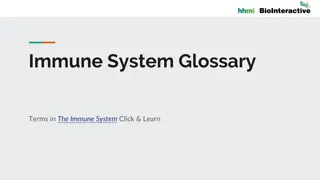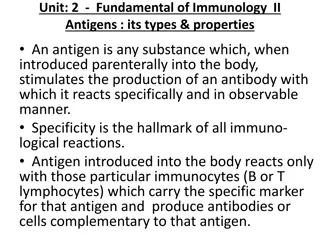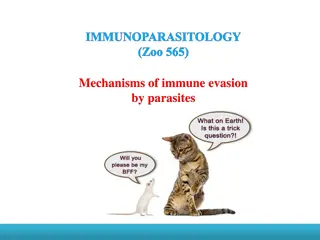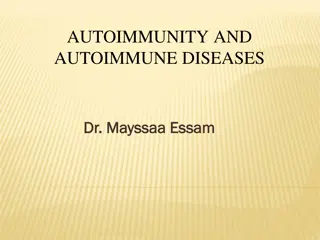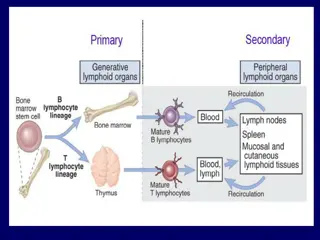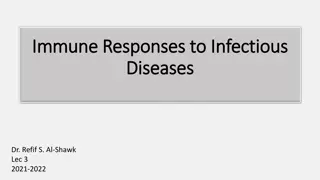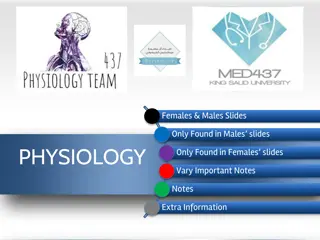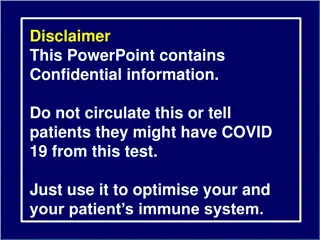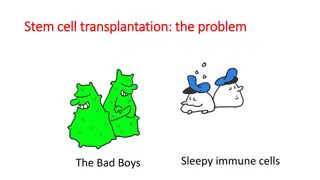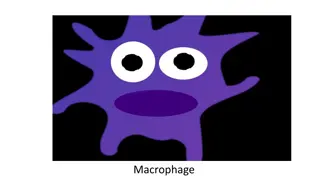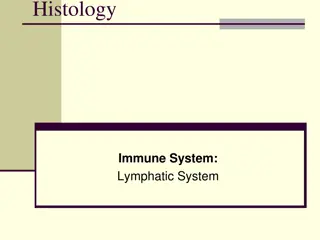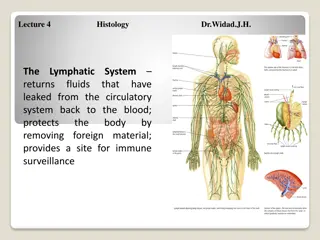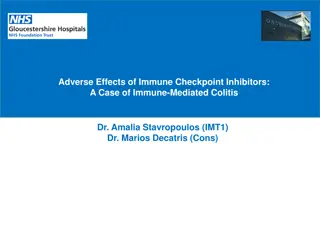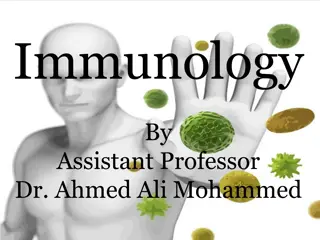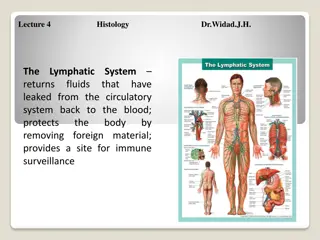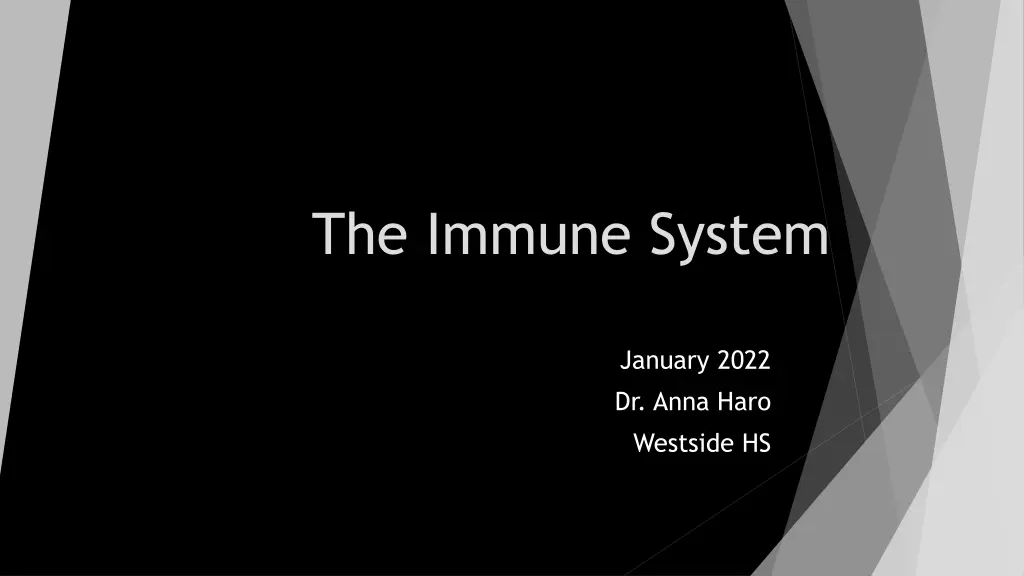
Understanding the Immune System Functions and Activation
Explore the main functions of the immune system, including fighting pathogens, neutralizing harmful substances, and combating disease, along with how it is activated by antigens. Learn about the immune response pathway and the cell types involved. Discover the similarities in the three main functions of the immune system.
Download Presentation

Please find below an Image/Link to download the presentation.
The content on the website is provided AS IS for your information and personal use only. It may not be sold, licensed, or shared on other websites without obtaining consent from the author. If you encounter any issues during the download, it is possible that the publisher has removed the file from their server.
You are allowed to download the files provided on this website for personal or commercial use, subject to the condition that they are used lawfully. All files are the property of their respective owners.
The content on the website is provided AS IS for your information and personal use only. It may not be sold, licensed, or shared on other websites without obtaining consent from the author.
E N D
Presentation Transcript
The Immune System January 2022 Dr. Anna Haro Westside HS
LEARNING Objectives TEKS: 130.231.(c)(1)(A, & B) and 130.231.(c)(2)(A, B, C, F, & G) & (3)(B) Students will apply knowledge of human and cellular biology. Students will develop new knowledge and skills of the immune system. Students will evaluate the physiology of the immune system. Students will compare and contrast the innate and adaptive immune systems. Students will identify the anatomy of the immune system.
Objetivos de aprendizaje TEKS: 130.231.(c)(1)(A, & B) and 130.231.(c)(2)(A, B, C, F, & G) & (3)(B) . Los estudiantes aplicar n conocimientos de biolog a humana y celular. Los estudiantes desarrollar n nuevos conocimientos y habilidades del sistema inmunol gico. Los estudiantes evaluar n la fisiolog a del sistema inmunol gico. Los estudiantes comparar n y contrastar n los sistemas inmunitarios innato y adaptativo. Los estudiantes identificar n la anatom a del sistema inmunol gico.
The Immune System The main functions of the body s immune system are: 1. to fight infectious pathogens, like bacteria, viruses, parasites, or fungi, and to remove them from the body; 2. to recognize and neutralize harmful substances from the environment, and 3. to fight disease-causing changes in the body, such as cancer cells. Discussion: Explain what the three above functions have in common.
Immune system activation The immune system is activated in the human body by substances that it doesn t recognize as its own, such as antigens and allergens. An ___________________ is any substance that causes the body to develop an immune response against that substance. Examples of antigens include the proteins on the surfaces of bacteria, fungi, parasites, and viruses. Plus toxins, chemicals, or any other substances that come from outside the body are antigens. When antigens attach to receptors on human immune cells, a series of processes are triggered to activate the immune response pathway. Once the body has come into contact with an antigen for the first time, it usually stores information about its pathogen and how to fight it; thus, the body can fight the pathogen faster after another exposure.
Human Immune System response pathway Image from: https://www.researchg ate.net/figure/Schemat ic-summary-of-immune- system-agents-and- their-interactions-in- response-to-a- first_fig1_221506752 Describe the immune system response pathway. What cell types are involved in the immune response?
Innate and Adaptive Immune System The immune system is subdivided into two, specifically the innate immune system and the adaptive immune system. The innate immune system provides a general defense against harmful germs and substances, so it s also called the non- specific immune system. The main job of the innate immune system is to fight harmful substances and germs that enter the body, for instance through the skin or digestive system.
Innate and Adaptive Immune System The innate immune system mostly fights disease and illness using immune cells called natural killer cells and phagocytes ( eating cells a type of WBC). Phagocytosis is the process by which a phagocyte surrounds, destroys, and eats foreign substances then removes the dead cells.
Innate and Adaptive Immune System The adaptive immune system responds to antigens and produces antibodies to use them to fight pathogens that the body has previously come into contact with. This is also known as an acquired (learned) or specific immune response. Repeating, the adaptive immune system makes antibodies to each specific antigen and uses them to specifically fight the pathogens that the body has been previously exposed. Question: Explain if or how does the human immune system develop an innate or adaptive response to COVID- 19?
Anatomy of the Immune System Primary lymphoid organs: These organs include the bone marrow and the thymus. They create special immune system cells called lymphocytes. Secondary lymphoid organs: These organs include the lymph nodes, the spleen, the tonsils and certain tissue in various mucous membrane layers in the body (for instance in the bowel). It is in these organs where the cells of the immune system do their actual job of fighting off germs and foreign substances. Reference here: https://www.ncbi.nlm.nih.gov/books/NBK279395/
Anatomy of the Immune System Image from: https://www.healio.com/ hematology- oncology/learn-immuno- oncology/the-immune- system/components-of- the-immune-system
Anatomy of the Immune System the Lymphatics Image from: https://www.istockphoto. com/vector/lymphatic- system-gm470005186- 62216408
Autoimmune response The body s own cells have proteins on their surface, too. Human proteins do ______ usually trigger the immune system to fight our own cells. If the immune system mistakenly thinks that the body's own cells are foreign cells, then it attacks healthy, harmless cells in the body. This is known as an autoimmune response. In other words, an autoimmune disorder is when the patient s immune system attacks their own body.
What are your questions about the immune system? Please ask, email, use Remind, or TEAMS. Remember the HON-code? https://www.hon.ch/HONcode/. Even if you cannot find the HON-code stamp, please use the principles of website evaluation. Authority, confidentiality, complementary, attribution, justification, transparency, financial disclosure, and advertising policy (HON-code, 2019).
References https://www.ncbi.nlm.nih.gov/books/NBK279364/ Shier D, Butler J, Lewis R. Hole s Human Anatomy and Physiology, 9th edition. 2003. https://www.cancer.gov/publications/dictionaries/cancer-terms/def/antigen https://www.healio.com/hematology-oncology/learn-immuno-oncology/the- immune-system/components-of-the-immune-system https://www.cancer.gov/publications/dictionaries/cancer- terms/def/phagocytosis https://www.ncbi.nlm.nih.gov/books/NBK279395/ https://www.researchgate.net/figure/Schematic-summary-of-immune-system- agents-and-their-interactions-in-response-to-a-first_fig1_221506752 https://www.istockphoto.com/vector/lymphatic-system-gm470005186- 62216408 DiPiro, J. (2005). Pharmacotherapy: A pathophysiological approach (6th ed.). McGraw Hill.

